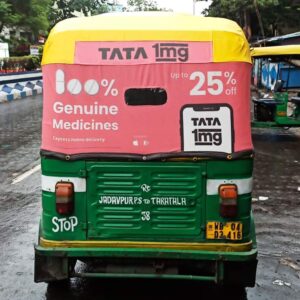- We have a service package that is right for you
- Cabin no-570,5th floor,Jubilee walk , Mohali
- info@cluepointmedia.com
Technological changes also attract new behaviors, and that is precisely why we can now talk about two main types of marketing: digital and traditional; a duo that, far from being opposed to each other, has proven that it benefits from mixing their actions in creative and intelligent strategies.
That can only occur if one is aware of each one’s purpose and distinguishing features.
All events and methods that use the internet, digital devices, and online platforms to trade, promote, or convey anything relating to goods and services, customer support, and performance monitoring are collectively mentioned as digital marketing or online marketing. Traditional marketing (or offline marketing) mainly refers to all sales, promotion, and communication strategies that occur outside digital environments, whether in media such as television or printed newspapers to activations in physical stores. And now that we have established their definitions, let’s talk about what makes them different from each other:
The approach
In traditional marketing, the audience cannot fully decide the advertisements they will see, for example, on a television channel, brands concentrate on showing the product they offer so that it is the protagonist and the main attraction.

In the case of digital marketing, brands know that it is a more personalized process and that people can even choose what they want to see on their cell phones or computer screens, like
auto rickshaw branding. Therefore, they must offer more than just an image or the benefits of what they sell. Therefore, the most important factor and the thing that will draw in the audience is the content.
The media they use
You surely already sensed this difference: digital marketing lives in environments related to the Internet, such as advertisements on websites, publications and campaigns on social networks, email marketing, blog content, and chatbot attention, among others.
Traditional marketing makes use of additional media, such as radio, print, television, billboards, events in physical stores, phone calls, and so on, that have reach as well but do not rely on platforms or devices that need to be connected to the Internet.
The scope
The breadth of each form of marketing is then explained by the above. Because digital relies on an internet connection, it might remove geographic constraints from your plan. Because of this, it is simpler for a company with an online store to advertise across the nation rather than only in the location where it is located.
In the case of conventional marketing, it is simpler to reach the audience through television or radio if the product or service focuses on the issues that those people confront because some market segments still lack the internet connectivity that digital techniques require.
The ease with which your performance is measured
The reality is that digital marketing can be assessed and, therefore, corrected faster than traditional marketing. Bad figures are prevented and resource loss is decreased because digital technologies are employed to consult outcomes in real time. Furthermore, it is simpler to trace the source of leads or clients as well as their purchases and interests. Traditional marketing, on the other hand, is reviewed until it finishes its campaigns. ROI (return on investment) takes time to arrive, data can be less timely, and if it is not done quickly enough, opportunities are lost.
The cost
Broadly speaking, the cost of traditional marketing to auto rickshaw branding can be higher than digital marketing. You just have to compare what a company must invest in a Facebook campaign, versus one in print media.
Engagement
Audience engagement is almost instantaneous since digital marketing initiatives facilitate it. For traditional marketing, tasks like downloading papers, capturing data, viewing movies, and making an instant online purchase when a product is released take more time since they need to travel to a designated location.
However, if your marketing plan has a digital platform, you may start interactions more quickly. As a result, communication is more effective and occurs in both ways.
Advantages of digital marketing:
· It is quick to show results.
· Allows greater interaction and engagement on the part of the audience.
· It does not involve large investments of resources: the cost of content marketing is 62% lower than other methods.
· It can cross borders and have a reach beyond the local.
· It adapts faster to people’s consumption habits.
Advantages of traditional marketing:
· It speaks to a broader audience. It should be easier to understand, allowing you to reach more people.
· Their message is reproduced in the media without people being able to hide it.
· If it is well executed, it is easier for people to remember the messages because there is a lower volume of offline advertising than online.
Disadvantages of traditional marketing:
· It takes longer to measure its impact.
· It is not possible to correct errors or optimize campaigns if you notice an opportunity to do so.
· It needs more economic investment.